#novus ordo
Text
37 notes
·
View notes
Text
A brief comparison of the liturgical prayers of the TLM (traditional Latin Mass) and the Novus Ordo.
Most practicing Catholics know that major revisions were made to Roman Catholic Mass in 1969, but aside from the language of the liturgy, what has changed?
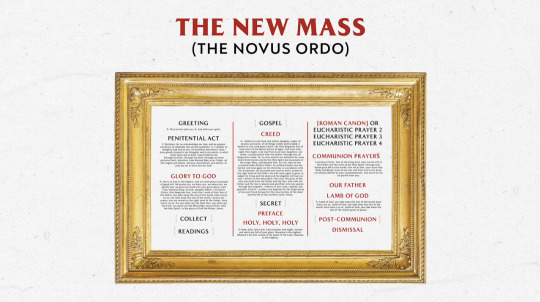
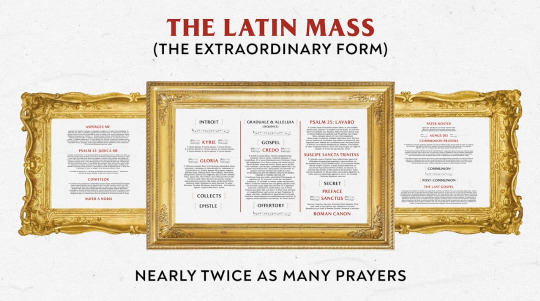
The Latin Mass has nearly twice as many prayers as the New Mass.
Orations
Of all the rotating prayers (orations) 83% are unique to the TLM. In the new missal, 669 of the original 1,273 orations have been removed, and of the remaining, only 13% were left unchanged.

Reverence
Even the number of times the priest kisses the altar, genuflects, and makes the sign of the cross, has been severely reduced
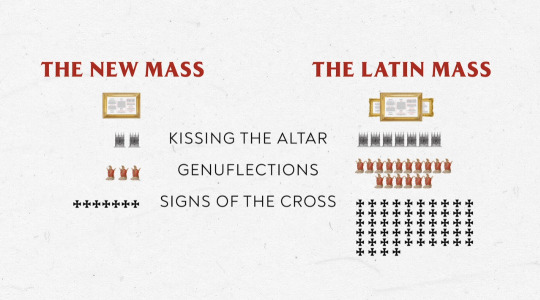
A Different Cycle of Scripture Readings
The new Roman missal has a three year cycle - a well intentioned attempt to expose the laity to more scripture in the Mass. However given the nature of the three year cycle, it's inevitable that the readings will not align as appropriately and succinctly as the specially chosen readings of the older one year cycle when it comes to specific feasts and the liturgical seasons, a choice of quantity over quality unfortunately.
I leave it to the reader to decide for his or herself whether the older one year or newer three year cycle is preferable.
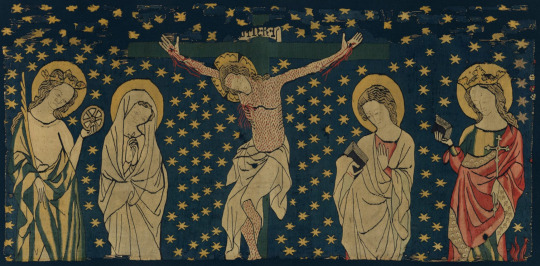
The Last Gospel
Catholics who have never attended a Latin Mass may be surprised to learn that following communion and dismissal, there is a lengthy gospel reading called The Last Gospel (John 1:1-14).
Why the last Gospel?
From the notations of the 1962 Roman Daily Missal:
The Mass began with the longing cry of the Old Testament: "Send forth Thy light and Thy truth!" It could not be concluded in a more worthy and more sublime manner than with the words of St. John: "The Word was made flesh, and dwelt among us; and we saw His glory as of the Only-Begotten of the Father, full of grace and truth."
And according to Catholic author Msgr. George J. Moorman, in his book, The Latin Mass Explained:
This reading, in the course of time, was added to the Eucharistic service on account of the great reverence the early Christians entertained for this portion of the Gospel and because it contains a summary of the benefits of which we are made partakers through Christ’s Sacrifice. The service was introduced by the prayer of the priest: ‘Send forth Thy Light and Thy Truth!’ It could not be concluded in a more becoming manner than with the words, ‘AND THE WORD WAS MADE FLESH, and dwelt among us; and we saw His glory, the glory as of the Only-begotten of the Father, full of grace and truth.’ At the words ‘AND THE WORD WAS MADE FLESH’, the priest and the people kneel on one knee in token of adoration of the mystery of the Incarnation, which is expressed in these words, and to indicate that the Son of God came from Heaven to earth. When the priest has finished the reading of this Gospel, the server answers, ‘Deo Gratias’—‘Thanks Be To God.’ These are the last words of the Mass.
Unfortunately this beautiful gospel passage and it's place of honor have been completely removed in the New Mass, and it's omission may even (as a matter of personal opinion) have contributed to the enormous number of people who leave Mass early immediately following Holy Communion.
Conclusion
Dearest Reader, I have attempted to be objective and only present facts in the above, however it may be clear to those of you who are familiar with my blog, where my biases lay. I am a Latin Mass Catholic, I love the traditional liturgy and will never stop advocating for the timeless Mass of ages that has brought untold numbers of faithful to the Lord for over a millennia. However, I make no judgment on the faithful who prefer the New Mass, nor do I mean to suggest that the Novus Ordo is in any way invalid. I only ask that all consider the information I have compiled and do your own research, that you may come to your own well informed conclusions. God Love You!
If any have questions or further interest in the topic of the Traditional Latin Mass my DMs are open or you may send an 'ask', I will answer or redirect you to the best of my ability.
(Credit to The Mass of the Ages project for images above)
111 notes
·
View notes
Text
I haven’t posted on here in a long while.
My diocese has finally adjusted in response to Tradiones Custodes, with most parishes prohibited from using the TLM at all and mine is allowed only on Sundays.
I went to Mass for All Souls as it’s one of the most important Masses of the year for me. The priest prayed a Latin Novus Ordo with an extra heavy dose of Latin. He said less in English than he would at a TLM.
There was still something missing. Years ago I would have been content with Latin and incense and Gregorian chant (Dies Irae was sung after Mass, and I feared it wouldn’t be sung at all). But there really is something about the prayers of the 1962 Missal.
I do think Latin is good, but if it were up to me, I think I would take the 1962 Missal in English over the 1970 in Latin. The prayers at the foot of altar. Iudica me, Deus, et discerne causam meam de gente non sancta. Judge me, O God, and distinguish my cause from the nation that is not holy. Few prayers are more appropriate for our time! Certainly for me personally.
Anyway, just a few thoughts. And may the souls of the faithful departed, through the mercy of God, rest in peace.
4 notes
·
View notes
Note
Your recent reblog from @acatholicrose has made me wonder two things:
Do you go to TLM or Novus Ordo Mass?
Do you veil in church?
I go to Novus Ordo Mass at my regular Parish. I have occasionally attended TLM, there is a Parish that follows it in the region I live in, but it is a hours long drive to get there.
I do not veil so far. I have thought about it and love seeing takes on it from fellow Catholic Ladies. I might take this step some day 🙏
#personal#catholic#catholicism#mass#traditional latin mass#tlm#novus ordo#tradwife#traditional gender roles#traditional femininity#tradfem#traditional
2 notes
·
View notes
Text

Feast Day:
The Forty Holy Martyrs, Ora Pro Nobis!
#forty#forty holy martyrs#soldiers#ancient christianity#sspx#orthodox#fsspx#novus ordo#catholic art#roman catholic#catholic#catholic church#ora pro nobis#latin mass#martyr#saints#saint quotes#catholic saint quotes
3 notes
·
View notes
Text
Permissione Divina e: quando un atto è valido ma illecito?
Cerchiamo di chiarire l’affermazione secondo la quale – la Messa nuova detta Paolo VI (Novus Ordo) – è per il mondo tradizionalista “VALIDA MA ILLECITA”.Inoltre: che cosa è la “permissione divina”?Troverete le risposte da approfondire in QUESTO FILE pdf da scaricare qui: Permissione Divina e: quando un atto è valido ma illecito
Per comprendere sulla questione della Permissione Divina, suggeriamo…
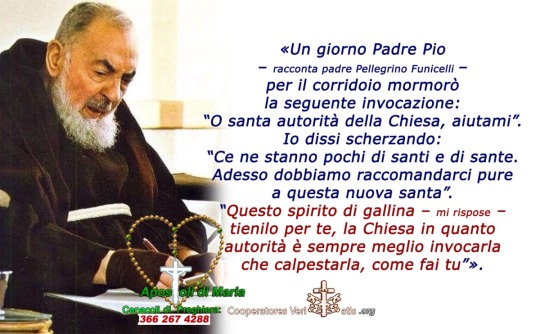
View On WordPress
#apostasia#Divina Provvidenza#eresia#messe invalide#novus ordo#Padre Pio#permissione divina#validità#vetus ordo
0 notes
Text
https://onepeterfive.com/hiding-from-mass/
Excerpts:
Is this Catholicism? Is this the glorious Catholic Church which conquered the hearts of nations? To hide in the basement while Mass stumbles along upstairs? To be obliged to receive spiritual abuse, under pain of mortal sin and eternal damnation?
I know many will say things as: Just move–as though adequate paying jobs are as plentiful as modern synods. Just talk to the bishop–as though most bishops care to listen. Just find the SSPX–as though a mere 700 priests can reach the entire world any given Sunday. Just suffer anything because Jesus is there–as though the Mass is merely a Communion service, and little children are not formed by how they worship.
Regardless, all such comments miss the point. The current state of the Catholic Church is a mess. Worse still, the mess is growing. It seems every week a bishop or two pulls the rug out from under a TLM community, or even suspends a devout Novus Ordo priest. Faithful Catholics, many of whom already moved to a new town for a reverent Mass, are left with a similar situation to ours. It is a great spiritual trial. More than this, it is dangerous to the upbringing of their children. [...]
To all of this, then, I ask an open question: How can Catholics be bound to attend such a Mass? How can Catholics be obliged to be spiritually abused? Are there no limits to what a Catholic would be obliged to attend?
I have heard arguments from both sides. Some state with conviction that no, one is not obliged to attend Mass when it is spiritually dangerous. To which I ponder, how far is too far? Define, precisely, what is too dangerous. Others, however, state firmly that one is always obliged to assist at Mass. To which I ponder the many Catholics who have lost their family’s faith because of such faithless liturgies.
I have no answers. All I can do is state where I am at right now. My conscience says to go to Mass, but also to be very wary.
#it is impossible for the Mass to be spiritually dangerous#either it is good and holy and bringing you to eternal salvation. or. it is not the Mass.#catholic#1P5#dan millette#Holy Mother Church cannot give us rites prayers rituals liturgies etc which are dangerous erroneous or evil#if some entity has given you a liturgy etc which is dangerous erroneous or evil... that entity is not Holy Mother Church#you cannot reconcile the indefectibility and infallibility of the Church - the one and only sure way to Heaven - with a 'dangerous mass'#novus ordo#TLM#holy mother church#conciliar church#sede vacante
0 notes
Text
Starter (for Kadaj!!) | Muse: Cloud

"I don't know what this is about... but you better stay the hell away."
Cloud kept his distance, getting a strange feeling in the back of his thoughts as he stared at this one. It wasn't right, whatever this was. This being wasn't natural. Though, to be fair to himself, what exactly was natural anymore? This world of theirs always had surprises that came popping up from thin air. A strange person wasn't really too insane of a concept. Still, even though he was getting quite a clear visage of them, silver hair and all, it just was not processing in his head... As if he didn't want to believe what he was seeing. His instincts were wanting him to run.
@novus-ordo-seclorem
10 notes
·
View notes
Text
sure hope that trads will one day learn that the catechism is not a sacred text
#guys. its literally newer than vatican ii#so if you are against the novus ordo bc it is too new#you MUST stop using catechism chunks taken out of context for gotcha moments#catholicism
28 notes
·
View notes
Text




#trillionheir#lifestyle#bet my whole tribe#make it#🏆#annuit coeptis#novus ordo seclorum#The Most High Approves Our Undertakings#NEW WORLD ORDER#👁️⃤
14 notes
·
View notes
Text

@novus-ordo-seclorem asked: "Well, well. The boy lives." Cue a disingenuous smile from the man he would call father.

and there he is.
jake's on edge, arms folded defensively, shoulders square with false bravado. the smile wesker wears feels off, and jake finds his eyes narrowing in response. he can pretend like it's nothing. like seeing the man behind the name means nothing, but it fuels a swirling of emotion inside of him, so much that tastes like anger. the stories have made him a legend ( and for jake, he's a mystery that, despite his absence, still played a role in his life ).
❝ yeah? it's a talent of mine, ❞ he retorts. more than luck has kept him alive, but he finds it ironic coming from him. hell, maybe he shouldn't. clearly he got his penchant for surviving from somewhere. ❝ last i heard, you've got nine lives yourself. ❞
there's nothing casual in seeing him. and yet he desperately tries to cling to playing pretend.

5 notes
·
View notes
Text
𝔄𝔤𝔞𝔱𝔥𝔬𝔡𝔞𝔦𝔪𝔬𝔫 - 𝔑𝔬𝔳𝔲𝔰 𝔒𝔯𝔡𝔬 𝔖𝔢𝔠𝔩𝔬𝔯𝔲𝔪
#Agathodaimon#Higher Art of Rebellion#Novus Ordo Seclorum#Full-length#Release date:#November 29th#1999#Genre:#Symphonic Black Metal (early); Gothic/Black Metal (later)#Themes:#Darkness#Occultism#Vampirism#Demons#Romanticism#History#Mythology#Germany
4 notes
·
View notes
Text
Also my church has a special devotion to the Blessed Virgin 🥰 every time we celebrate a baptism, a marriage or an important feast like today we go and spread incense to the statue of the Holy Mother and we bring her red roses 🌹
We do it at the end of baptisms to give the mothers to Mary's care, after marriage so the couple can ask for blessing and intercession and during feast because we want to honour her ❤️
18 notes
·
View notes
Text
"In a new document Pope Francis makes claims about the novus ordo, or new Mass created by a deceptive committee after the fathers of Vatican II returned to their home dioceses, which do not hold up and which describe, in fact, only the traditional Latin Mass.
So often those who pronounce with authority on the traditional liturgy do not pray it and thus do not know or understand it. I have offered the two liturgies side by side for over a decade, observing most closely the prayer, and effects on the faithful praying, attending each.
He libels the Church’s traditional liturgy as a kind of empty formalism which cannot evangelize when that is exactly what it has done for nearly 2,000 years. The TLM draws converts every year to my parish [I, troubled-guest, am one of them!]. The novus ordo does not.
Doctrinal doubters and deniers, along with many well-intentioned faithful, attend the new Mass exclusively. This is, of course, certainly better than the alternative of profaning the Lord’s Day by not attending Mass. Prsying the Mass, however, should result in the healing and perfecting of our faith.
Typically, dissenters to the Church’s teaching on marriage and life are found in novus ordo congregations but not in TLM communities. To the contrary, faithful who attend the TLM give assent of intellect and will to all that the Church teaches in faith and morals. Which, in fact, is evangelization and which not?
With TLM: Converts every year. Novus ordo not.
With TLM: entire family attends Sunday Mass, parents together with kids. Novus ordo not.
With TLM: all young courting couples desire sacrament of marriage. Novus ordo not. Traditional Catholic youth “court”, they don’t “date”, acknowledging the Church’s teaching on chastity.
With TLM: couples who ask for infant baptism attend Sunday Mass faithfully and are sacramentally married. Novus ordo often do not.
With TLM: more men participate more often in Sunday and weekday Mass and devotions, at times up to a majority of the congregation at any given moment. Novus ordo not.
With TLM: parents take active role in forming their children in the faith by example and home instruction. Novus ordo not.
Perhaps the most glaring difference is the frequency of confession for those who attend the TLM in contrast to those who exclusively attend the novus ordo and who rarely confess but who receive Communion at the same percentages. Is one to believe all mortal sin has disappeared in the novus ordo?
New parishioners are joining the traditional community on a continuing basis: another new member joined this week. Not so in the novus ordo.
Traditional Catholics also show up for weekday Mass and Wednesday evening adoration. Novus ordo families, with the exception of those who also attend the traditional Mass, do not participate in devotions beyond the Sunday liturgy. Restricting a parish to offering only the new Mass sounds the death knell for community life.
At this link a news item about the latest assault on Catholic tradition:
Yet another document that creates more division where there was mutual peace about the matter of the Church’s way of worship and yet more refusal to allow the Holy Spirit to decide the legitimacy of the new liturgy within the Catholic Faith.
There is a great lack of silence in the new liturgy which in fact has none except where there are perfunctory pauses between prayers, all done our loud, which inhibit congregational reflection. Despite that here is a claim in the new document for that which does not exist:
“Among the ritual acts that belong to the whole assembly, silence occupies a place of absolute importance” which “moves to sorrow for sin and the desire for conversion. It awakens a readiness to hear the Word and awakens prayer. It disposes us to adore the Body and Blood of Christ” (52).”
For those unfortunately addicted to the new liturgy, silence creates an unwanted and uncomfortable agitation, an impatient waiting for the next item or loud interruption of interior quiet which makes room for God.
The traditional liturgy, on the other hand, creates space for profound participation by stipulating that certain prayers of the priest are to be uttered in the low tone to give interior room, through silence for deeper participation on the part of all, entering thereby more deeply into the prayer of mind and heart without the distraction of loudness and constant noise, a frequent characteristic, a feature not a bug, of the new liturgy."
2 notes
·
View notes
Text
Going to tlm today for the first time and I'm kinda nervous
#catholicism#catholic#latin mass#I've gone to mass in Latin (novus ordo) but pre-conciliar mass is a new thing#im going with a friend who loves it so... it should be alright!
2 notes
·
View notes